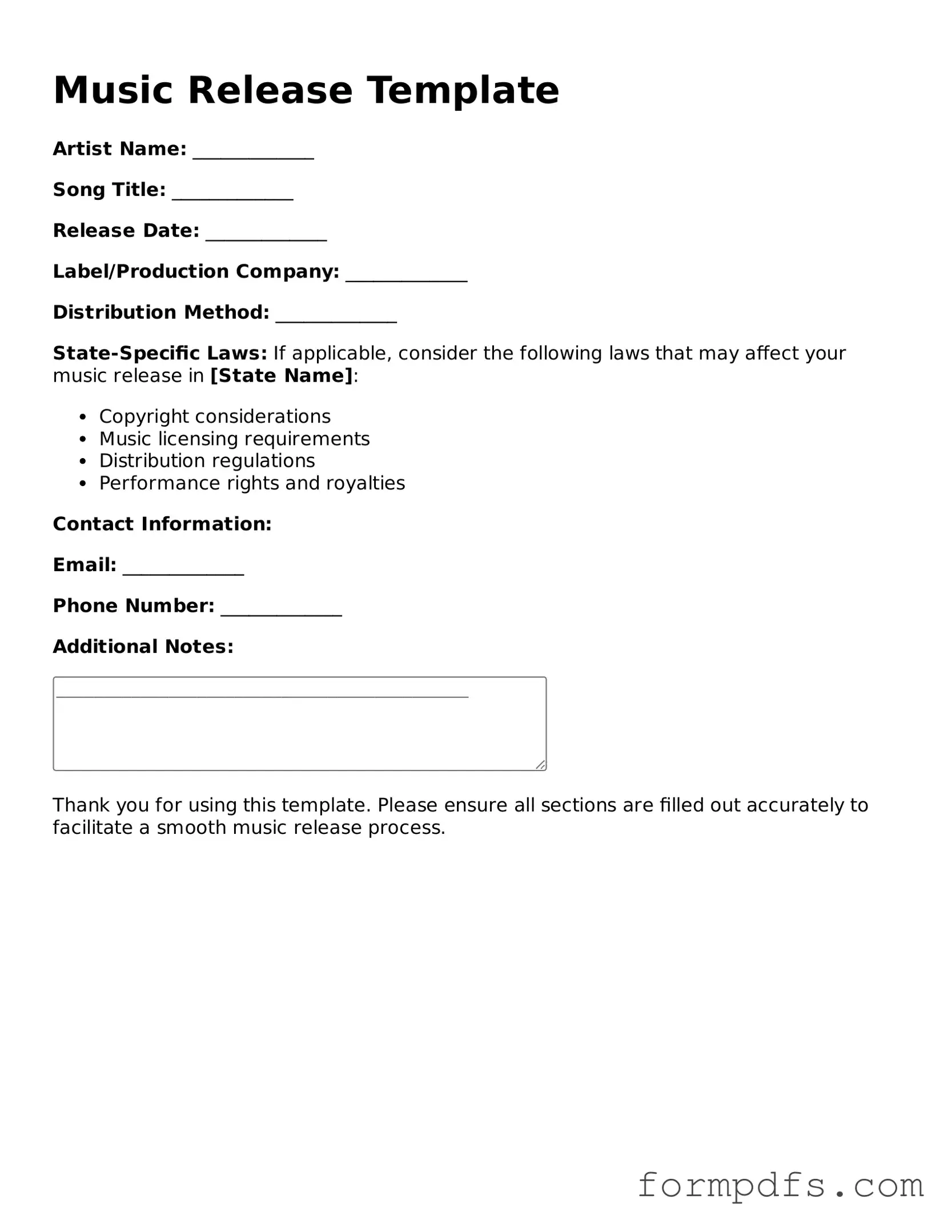What is a Music Release form?
A Music Release form is a legal document that grants permission for the use of a musical work. This form is typically used when an artist allows their music to be used in various contexts, such as films, commercials, or online platforms. By signing this form, the artist relinquishes certain rights, ensuring that the user can legally use the music without fear of copyright infringement.
Who needs to sign a Music Release form?
Any individual or entity that wishes to use a piece of music in a project should obtain a Music Release form. This includes musicians, producers, filmmakers, and advertisers. Essentially, if you plan to use someone else's music, you need to secure their permission through this form.
What information is typically included in a Music Release form?
A standard Music Release form usually includes the names of the parties involved, a description of the musical work, the scope of usage rights being granted, and any compensation details. It may also outline the duration of the agreement and any specific conditions or limitations regarding the use of the music.
Do I need a lawyer to create a Music Release form?
While it is not strictly necessary to hire a lawyer to create a Music Release form, it is often advisable. A legal professional can ensure that the document is comprehensive and compliant with relevant laws. This step can help avoid potential disputes or misunderstandings in the future.
Can a Music Release form be revoked?
Generally, once a Music Release form is signed and the terms are agreed upon, it cannot be revoked without mutual consent. However, the specifics can vary based on the terms outlined in the form itself. If the agreement includes a termination clause, the parties may have the option to terminate the agreement under certain conditions.
What happens if I don’t use a Music Release form?
Using music without a Music Release form can lead to legal issues, including copyright infringement claims. If an artist or rights holder believes their music has been used without permission, they may pursue legal action, which can result in costly penalties or the removal of the content in question.
Is there a difference between a Music Release form and a licensing agreement?
Yes, there is a difference. A Music Release form typically grants permission for specific uses of a musical work without a fee, while a licensing agreement usually involves compensation and may cover broader usage rights. Licensing agreements often contain more detailed terms and conditions regarding how the music can be used.
How long does a Music Release form last?
The duration of a Music Release form can vary depending on the terms agreed upon by the parties involved. Some forms may grant perpetual rights, while others may be limited to a specific time frame. It’s crucial to clarify this aspect in the document to avoid confusion later on.
Can I modify a Music Release form after it has been signed?
Modifying a Music Release form after it has been signed typically requires the consent of all parties involved. Any changes should be documented in writing to ensure clarity and avoid potential disputes. It is advisable to draft an amendment or a new agreement if significant changes are needed.
Where can I find a template for a Music Release form?
Templates for Music Release forms can often be found online through legal resource websites, music industry associations, or even through music distribution platforms. However, it is important to tailor any template to fit the specific needs of the parties involved and the context in which the music will be used.
